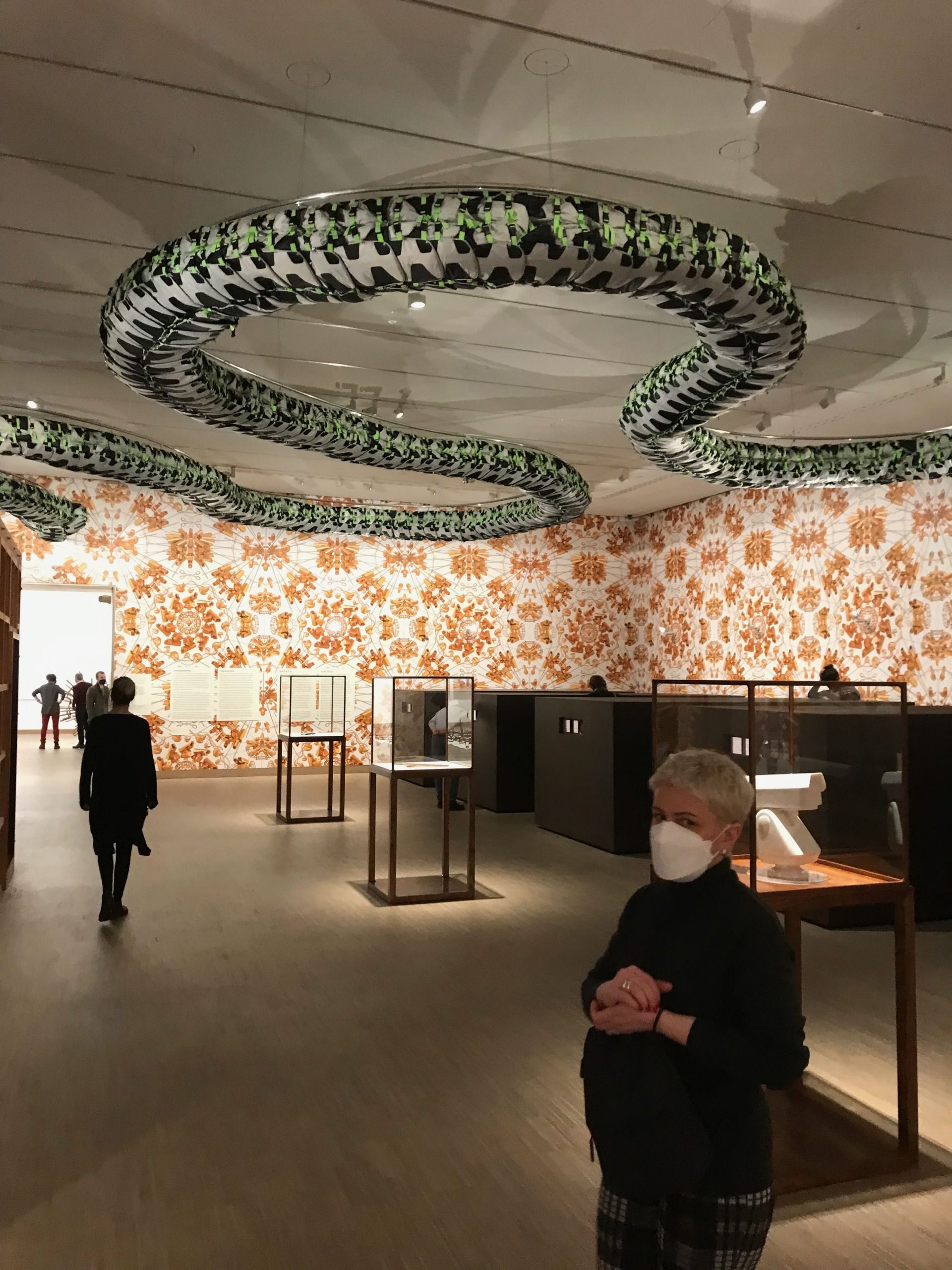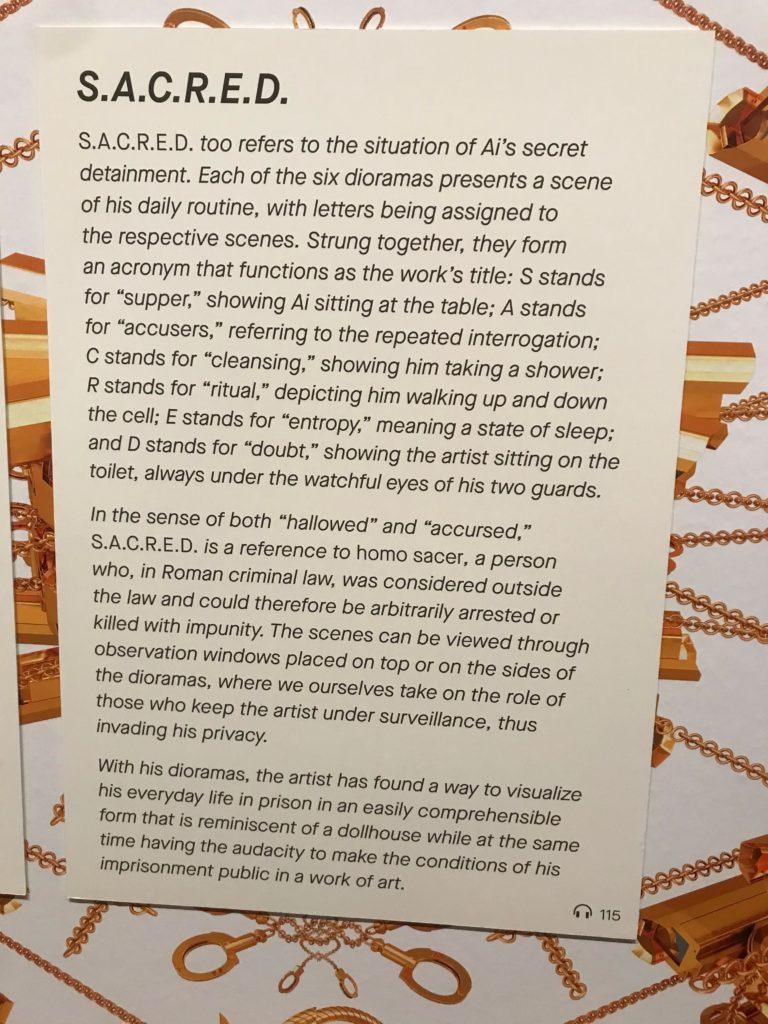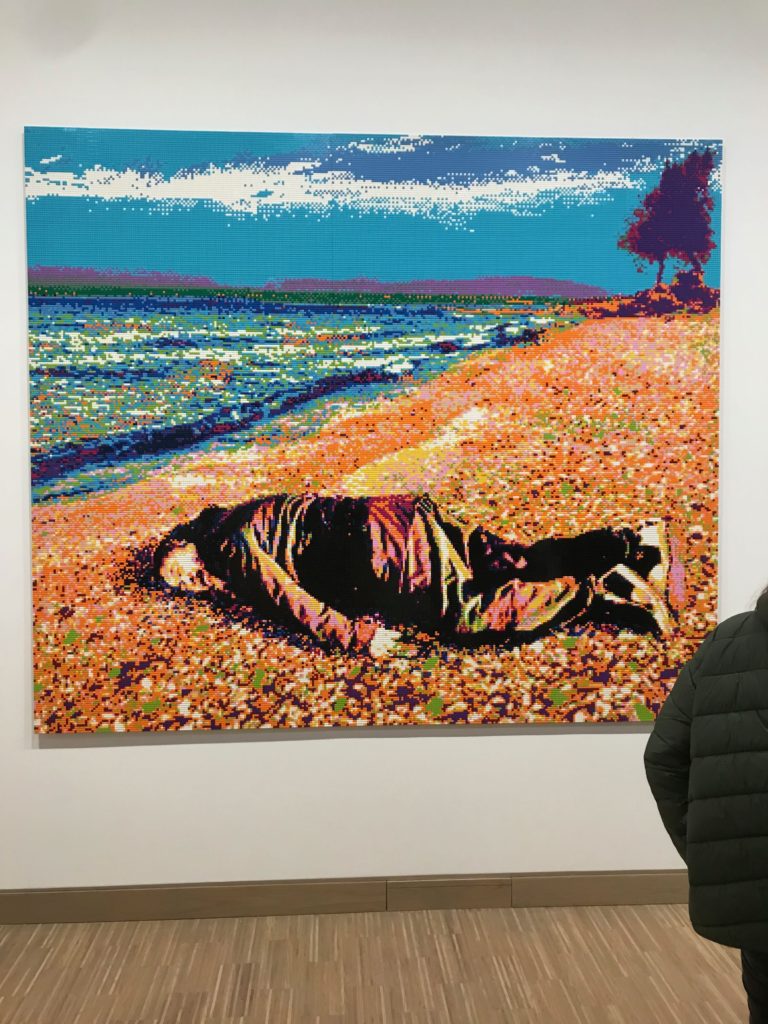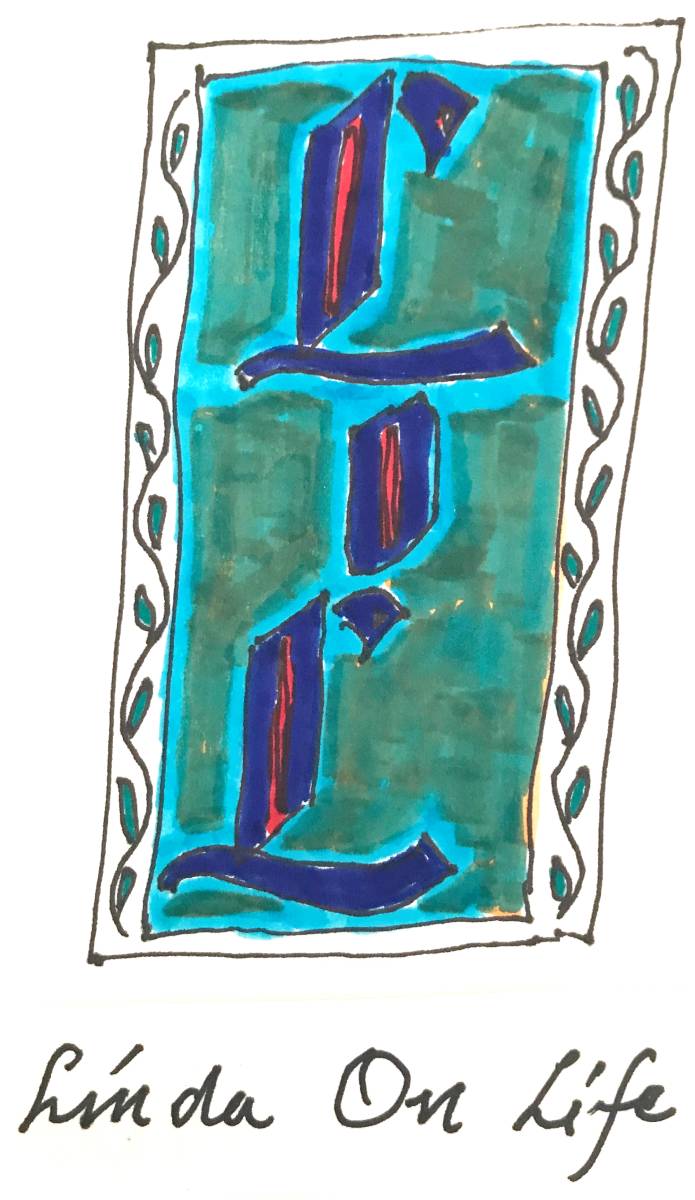Ai Weiwei In Search of Humanity
Getting to see art up close and in person is a wonderful experience. I had forgotten how nice it is to see paintings and 3-dimensional objects in their original form. While I was in Vienna, I saw an exhibit of Ai Weiwei’s work called In Search of Humanity at the Albertina Modern Museum, on a rainy Friday afternoon. The museum sits across from Karlsplatz, a place for local teens to hang out on nice evenings, according to my daughter.
As I walked through the exhibit I felt increasingly amazed at the breadth and complexity of Weiwei’s message and the broadness of his techniques. It seemed to fit well with the backdrop of the European refugee crisis, the wars in South Sudan, Ethiopia, Syria, Yeman and now Ukraine, environmental catastrophes and ensuing poverty, all themes of the times. It is apparently the most extensive exhibit of his work. I did not know much about Ai Weiwei before, except that my daughter’s friend had done a presentation on him in school this year. His work fills many rooms on the main floor of the museum.
As I went from room to room I was taking a journey that invited me to understand the displacement of people forced by totalitarian and democratic regimes alike and the methods that they have of controlling people, and ignoring the environment, which are brutal and widespread, which is then sending people around the world in a blending of cultures. People are getting turned down as immigrants by supposedly democratic nations which do not follow their own rules in accepting them, which leads to further deaths.
In the beginning of the exhibit we see a large gate with bullet holes that he got in Syria. Next to it the sign says, “ Today, more and more people are forced to leave their ancestral homes, for all kinds of reasons–war, religious descrimination, political persecution, environmental degradation, hunger, poverty. Will we ever be able to eliminate these scourges? Can a civilization that is built on the misfortunes of others carry on forever? And who can be sure that they themselves will not be torn from their homes one day to be cast on a foreign shore, only to encounter discrimination and to beg for sympathy?” –Ai Weiwei
All of the art is reflective of this question which seems to be a question for our time. We are living in a time where so many countries that have long been open to immigration are closing up to it, or picking and choosing whom they want to let in. Each act of taking someone in is compassionate, but there is clearly not enough compassion for everyone, and many people are dying. His exhibit shows us this. We see the memorial to Aylan Kurdi, the three-year-old Syrian boy who lost his life crossing over the sea to Greece, in which Ai Weiwei takes the same pose, and then makes a lego picture of himself lying on the beach there to remind us of the loss of this young life. We are told that while many felt it was sensationalist, the boy’s father appreciated the memorial. Why did this boy have to try to escape Syria? Why was it so hard for him to find a place to go? Ai Weiwei takes the same pose he took when he was interrogated in China. His friend made a sculpture of it called The Death of Murat and he calls this piece of work, After the Death of Murat. He is showing us his understanding of the war in Syria and the effects on people, and his connection to it. Looking at it I began to make my own connections to the war in Syria again, remembering fundraising for two families to come to my community with my students, and reimagining it as I see images of the war in Ukraine.
In another room I saw a piece on Ai Weiwei’s own incarceration in China. This room was dark, in contrast to the other rooms which are bright and white, and has 6 large models of his cell in China. Each shows some aspect of his imprisonment. In one of them he is being accused, in another he is sleeping, in another he is using the toilet, in another he is eating. In each, we can look in through a window on the side, and then get on a step and look in through a small window on the top. We see his life in this cell where he lived for 4-5 years. At each moment there are 2 guards standing over him. There is never a moment of privacy. Then, on the other side of the exhibit room there is a full scale replica of the cell which we can enter. He says everything in the room was wrapped in cellophane and we look at that and wonder about it. I assume it is to avoid blood splatter on the permanent parts of the room. The whole exhibit room is black while the cells are basically white. Glaringly white. Overhead is a snake on the ceiling made of children’s school backpacks. Ai Weiwei has a personal understanding of repression and the need to escape from repression. His art is a means of escaping from repression. He tells us what is going on, what he sees.
As I reflect on my experience of the exhibit, I can feel its power. Ai Weiwei is an artist with talent in a range of media, who is able to elicit deeply emotional responses to his work. His art is both personal and political. He is helping us use our humanity to not overlook the trouble and tragedy in the world because it is front and center in this exhibit. It not only deepens my understanding of what is going on in the world as he makes connections for me, but also what is going on with myself. I can see where I fall on a continuum of those who move around the world freely and those who are forced to leave where they live because they cannot stay where they are. I can see that I need to either be part of the change to make the world better or I am supporting the repression through silence and complacency. That is the goal of repression, to disconnect us from our humanity. Ai Weiwei reminds us that it is important to connect.




